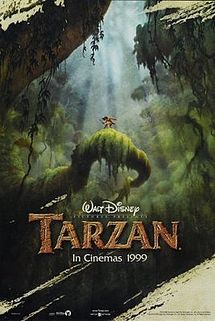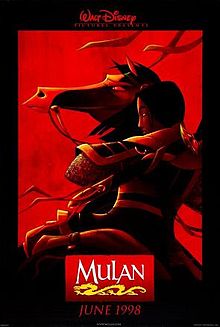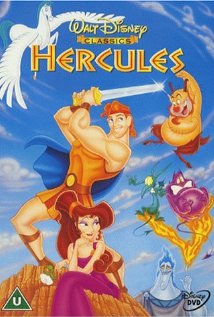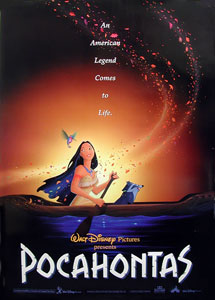 1999 marked the end of the 1990s, so it was appropriate that it also featured the final film of the Disney Renaissance, Tarzan. The studio took the classic Edgar Rice Burroughs story of a man raised by apes and turned it into a sweeping, heartbreaking animated film reminiscent of The Lion King.
1999 marked the end of the 1990s, so it was appropriate that it also featured the final film of the Disney Renaissance, Tarzan. The studio took the classic Edgar Rice Burroughs story of a man raised by apes and turned it into a sweeping, heartbreaking animated film reminiscent of The Lion King.
My favorite part of Tarzan is the music. The film’s original songs were written and performed by Phil Collins. I can’t hear “You’ll Be in My Heart” without crying, and the various other songs beg to be dramatically lip-synched to. In private, of course. The interesting thing about Tarzan is that its songs are for the most part not performed by the characters. They set the tone for the scenes in which they’re featured, by the movie is not a musical in the sense of the other Disney Renaissance films. Still, Tarzan is undeniably a strong addition to the Renaissance, with its powerful themes, gorgeous animation and an emphasis on music, even if it’s not worked into the plot like in the other films of the period.
After Tarzan, Disney could not return to its 1990s success. Films like Treasure Planet, Brother Bear and Home on the Range failed to live up to their predecessors of the past decade. Even The Princess and the Frog (2009), a rare theatrical 2D animated feature, could not recapture the magic of the Disney Renaissance. Although all the pieces were in place, like reimagining a classic fairy tale in a new setting and working music into the plot, the film lacked that something special which the Disney Renaissance films possessed. The Disney/Pixar collaborations come closest to capturing the 1990s feeling, but even they can’t compare, because of their computer animation and lack of memorable songs.
Maybe it’s time to stop pining for a reawakening of the Disney Renaissance style and to be content with the films the period provided for us. It’s satisfying to pop in an old VHS tape or catch one of the films playing on television. We’ll keep singing along to the soundtracks, and future generations will continue to dress like characters on Halloween and quote the same lines we loved as children. The Disney Renaissance hasn’t died just because no more films are being made in its style. It’s still living because the people who first loved it are still watching the films and passing them on to their children. And that’s pretty amazing, isn’t it?

 If you’re in your late teens to early twenties, odds are you often find yourself singing, “Let’s get down to business to defeat the Huns.” That’s the opening line in one of the most well-known songs from Disney’s 1998 animated feature
If you’re in your late teens to early twenties, odds are you often find yourself singing, “Let’s get down to business to defeat the Huns.” That’s the opening line in one of the most well-known songs from Disney’s 1998 animated feature 
 In 1996 Disney went back to adapting classic literature. They turned Victor Hugo’s novel
In 1996 Disney went back to adapting classic literature. They turned Victor Hugo’s novel  “Colors of the Wind” is my favorite Disney song. It was written by Alan Menken and Stephen Schwartz, and it’s featured in the 1995 film
“Colors of the Wind” is my favorite Disney song. It was written by Alan Menken and Stephen Schwartz, and it’s featured in the 1995 film 